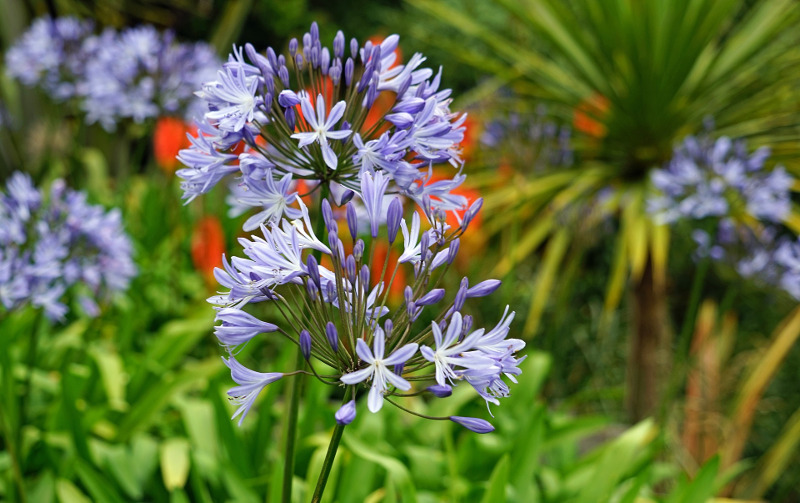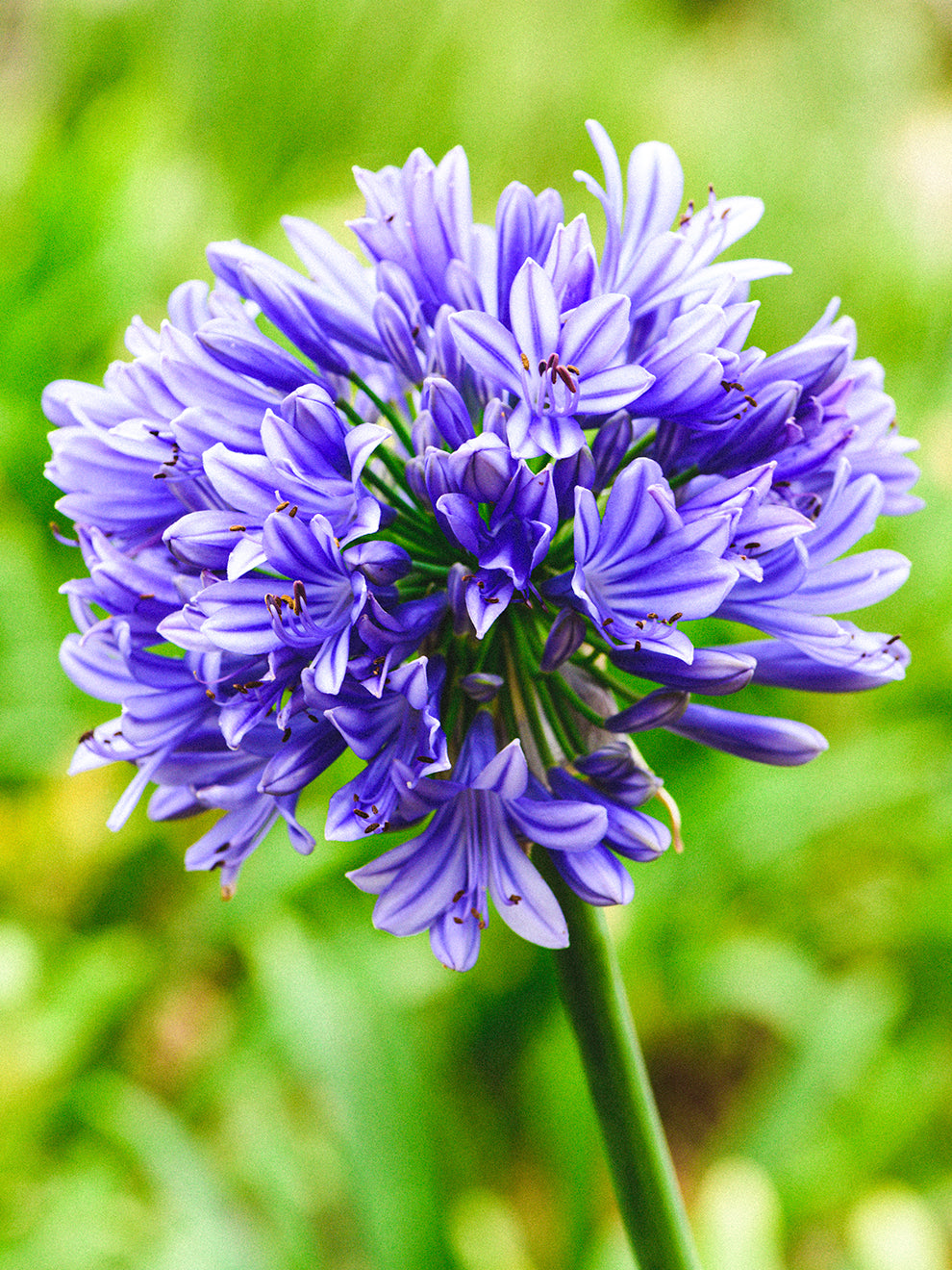Releasing the Secret to Effective Agapanthus Cultivation: Advice for a Flourishing Yard
In the world of horticulture, growing agapanthus successfully requires a critical method that incorporates different facets of plant treatment. By recognizing the nuances of agapanthus farming, one can create an environment where these plants thrive and grow abundantly.
Growing Agapanthus: Finest Practices
When planting Agapanthus, appropriate dirt preparation is necessary for ensuring successful development and growth of these stunning flowers. Agapanthus, typically referred to as Lily of the Nile or African lily, grows in well-draining soil with a somewhat acidic to neutral pH degree - Agapanthus. Prior to growing, it is important to modify hefty clay soils with organic matter such as garden compost or peat moss to boost drainage and supply vital nutrients for the plants
To grow Agapanthus, select a location that gets complete sunshine to partial color, as this will promote healthy growth and plentiful blooming. Dig an opening two times the size of the plant's origin ball and position the Agapanthus at the same depth it was formerly expanding. Delicately backfill the hole with dirt, weighing down securely to get rid of any type of air pockets around the roots.
Water the freshly planted Agapanthus thoroughly and continue to keep the dirt evenly moist, particularly throughout the plant's active expanding season. Agapanthus. Using a balanced fertilizer once a month can even more sustain the plant's growth and flowering. By complying with these finest methods for planting Agapanthus, you can create a sensational display of these fascinating blossoms in your yard
Ideal Soil Issues for Agapanthus
For optimum development and flowering success of Agapanthus plants, making certain the dirt problems are ideal is critical. Agapanthus flourishes in well-draining dirt with a somewhat acidic to neutral pH degree ranging from 6.0 to 7.0. This kind of dirt permits appropriate water drain, preventing waterlogging which can cause root rot. To enhance dirt water drainage, consider including natural matter such as garden compost or peat moss when preparing the growing website. Additionally, Agapanthus favors soil that is abundant in nutrients, so incorporating a balanced plant food during the growing season can promote healthy development and lively blooms.

Watering and Fertilizing Tips
To guarantee healthy and balanced development and lively blooms, proper watering and feeding strategies are vital for successful Agapanthus growing. Agapanthus plants take advantage of routine watering, particularly throughout the expanding season. It is advised to water deeply as soon as a week, guaranteeing the dirt is moist however not saturated. Throughout heat or in pots, more constant watering may be needed to prevent the soil from drying out totally.
When it concerns fertilizing Agapanthus, a well balanced fertilizer with equal components nitrogen, phosphorus, and potassium can be applied in the springtime to advertise healthy growth and blooming. Slow-release fertilizers are suitable for offering nutrients progressively over an extensive period. Stay clear of over-fertilizing, as this can lead to too much foliage development at the cost of blossoms.
Additionally, integrating raw material like garden compost into the soil can improve nutrient levels and enhance soil structure, helping in the overall wellness of the Agapanthus plants. By adhering to these watering and feeding tips, gardeners can ensure their Agapanthus plants thrive and produce magnificent displays of flowers.
Pruning and Deadheading Techniques
Proper pruning and deadheading techniques play a vital function in maintaining the health and wellness and aesthetic appeals of Agapanthus plants, matching the crucial practices of watering and fertilizing for successful farming. Pruning Agapanthus involves getting rid of invested blossom heads, dead or yellowing fallen leaves, check this site out and overall shaping of the plant to promote much better development. Deadheading, the procedure of getting rid of discolored blossoms, not only improves the plant's appearance yet additionally urges further blooming.
When deadheading Agapanthus, it is advisable to snip off the flower stem at the base using sharp, clean shears. This procedure reroutes the plant's power from seed production back into origin and foliage growth, advertising a healthier and much more robust plant. Normal deadheading can expand the growing duration of Agapanthus and stop self-seeding, which can result in overcrowding.
In terms of trimming, Agapanthus typically benefits from a light trim after blossoming to clean up the plant and urge fresh growth. Cutting down the spent flower stems and removing any broken or dead vegetation assists maintain the plant's vigor and general appearance. Nevertheless, it is vital to avoid reducing into the crown of the plant, as this can compromise its health and wellness.

Protecting Agapanthus From Vermins and Diseases
Executing efficient pest and illness management methods is essential to securing the health and wellness and vitality of Agapanthus plants in growing. Agapanthus are usually hardy plants, however they can still succumb to various bugs and illness otherwise appropriately looked after. One common parasite that impacts Agapanthus is the Agapanthus borer, a caterpillar that tunnels into the plant, creating damage to the blossoms and fallen leaves. To avoid invasions, regular evaluation of the plants is important. If borers are found, they can be manually gotten rid of, or insecticidal soap can be made use of as a control action.
Along with parasites, Agapanthus are susceptible to diseases such as root rot and fungal fallen leave spots. These problems can often be avoided by making sure proper drainage and avoiding overwatering. If indications of condition show up, influenced components of the plant need to be quickly gotten rid of to avoid additional spread. Fungicides might likewise be used as a therapy procedure, complying with the supplier's directions thoroughly. By staying attentive and addressing pest and condition problems without delay, gardeners can help their Agapanthus thrive and thrive.

Verdict
Finally, successful growing of agapanthus needs appropriate planting strategies, ideal dirt conditions, sufficient watering and fertilizing, normal trimming and deadheading, and security from conditions and insects. By adhering to these tricks and pointers, gardeners can make sure a flourishing yard full you could look here of lovely agapanthus blossoms. Agapanthus. Bear in mind to preserve regular care and interest to information to promote the health and durability of these stunning plants
When growing Agapanthus, proper dirt preparation is crucial for ensuring effective growth and growth of these lovely blossoms.Water the newly site planted Agapanthus extensively and proceed to keep the dirt evenly damp, particularly during the plant's energetic growing period.For optimal growth and flowering success of Agapanthus plants, making certain the soil problems are ideal is crucial. When hair transplanting or planting Agapanthus, make sure the soil is well-prepared to give the needed structure for the plants to develop themselves efficiently. One usual insect that influences Agapanthus is the Agapanthus borer, a caterpillar that passages right into the plant, creating damage to the blossoms and fallen leaves.